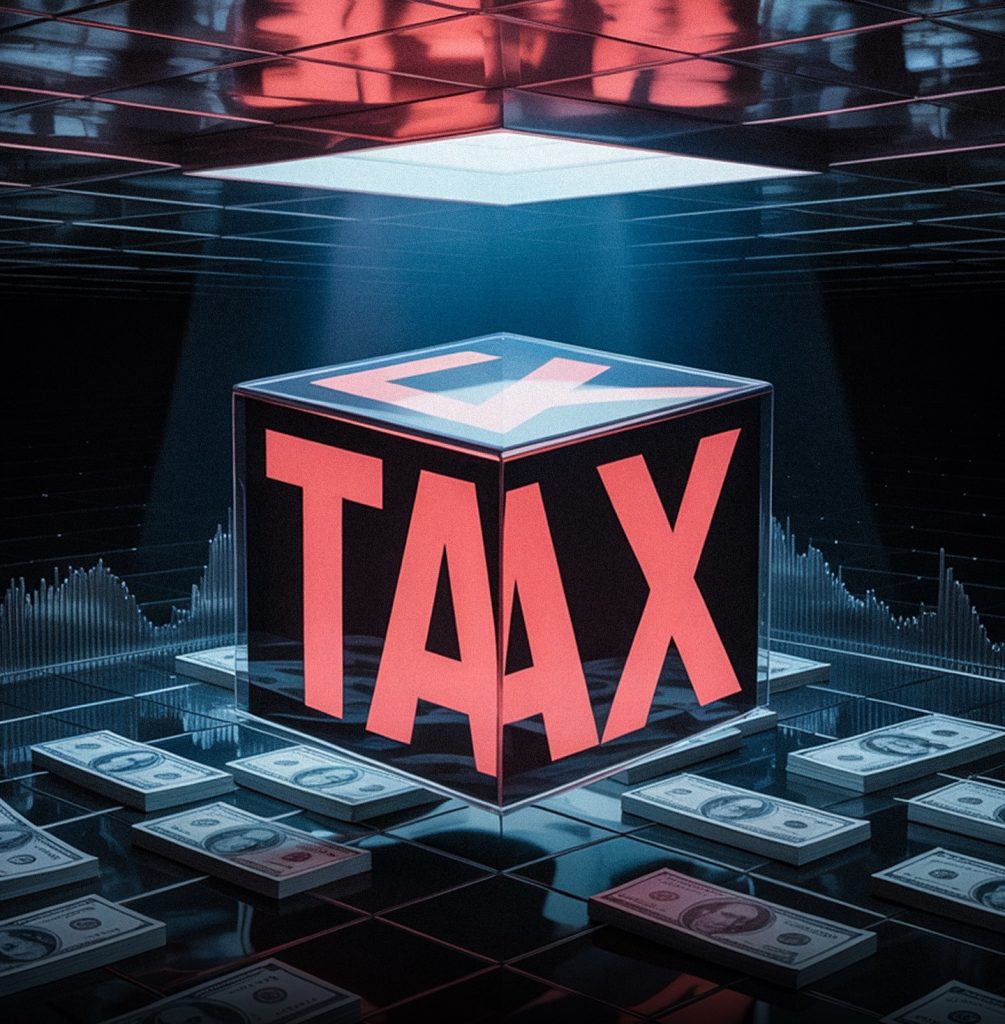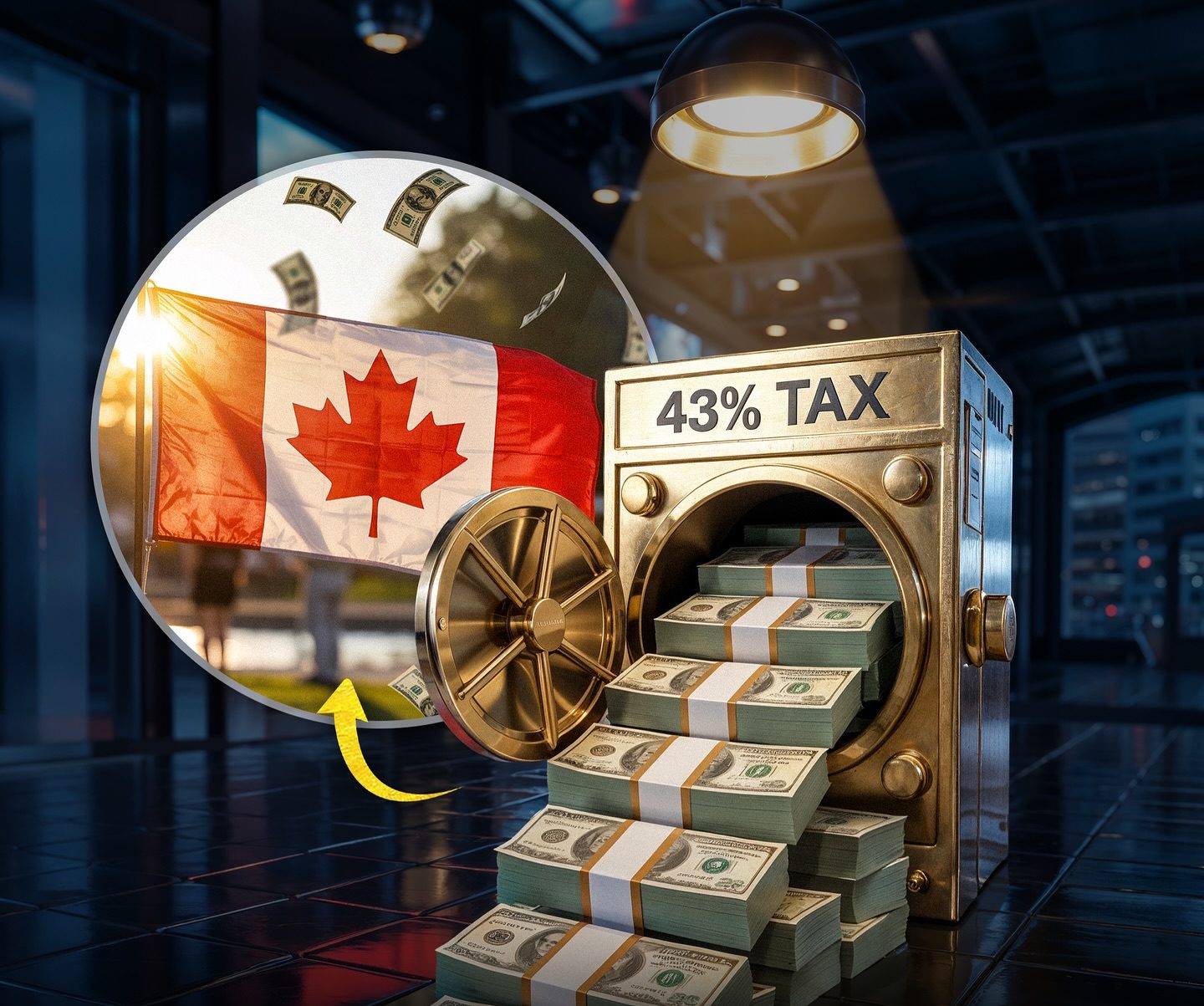Canadians Pay More in Taxes Than Food, Housing and Clothing Combined
Let’s talk about the one thing quietly draining more of your income than any other part of your life. It’s not your grocery bill. It’s not your rent. It’s not daycare, car payments, or phone plans. It’s taxes. And not just a little. Taxes now take up a bigger portion of your earnings than all your essential spending combined. That includes food, housing, and clothing — the three most basic things a family needs to survive. And yet, taxes quietly tower over them.
At first, that number sounds hard to believe. But the moment you look at the actual data, it’s not just believable — it’s shocking. We’re not just talking about income tax. We’re talking about the full list: sales tax, fuel tax, property tax, carbon tax, EI, CPP, and a dozen other government deductions that are part of everyday life. And once you total it all up, you’re left with a pretty bleak picture of what it really costs to be a working Canadian.
THE TYPICAL FAMILY EARNED $109,235 IN 2023 BUT HANDED OVER $46,988 IN TOTAL TAXES

Here’s the reality: in 2023, the average Canadian family earned $109,235. But from that, they paid $46,988 in total taxes. That’s 43% of their entire income. That means for every $100 earned, $43 never even made it to the dinner table. It went straight to various levels of government — before families even bought their groceries, paid their rent, or saved for retirement.
This isn’t a one-time spike. It’s a long-term pattern. According to the Fraser Institute, total tax bills for Canadian families have increased by more than 2,700% since 1961. Over the same period, spending on necessities like food and clothing has gone up less than half that. So not only are taxes the biggest single expense today — they’ve also grown the fastest.
And what’s even more frustrating is that this isn’t something people see clearly. Income taxes show up on your pay stub, but the rest are scattered, buried, or quietly deducted. Property taxes arrive once a year and are easy to forget. Fuel taxes get mixed into your gas bill. HST shows up in small numbers on everyday purchases. You feel the financial squeeze but rarely connect it all back to the same thing. Until now.
CANADIANS SPEND 11% OF THEIR INCOME ON FOOD

Let’s compare that to something you do feel — food prices. Everyone knows groceries have gotten expensive. Every family has cut something from their grocery list. Maybe it’s fewer snacks. Maybe you’ve switched to cheaper brands or shop at discount stores. It’s one of the most direct forms of inflation we experience. But even with all of that, the average Canadian still spends just 11% of their income on food.
It feels big because you see it every week. But it’s nothing compared to the invisible expense that is taxes. You could pay for all your groceries four times over and still not reach the amount you’re taxed in a single year. And groceries are something you choose. You control how much, when, and what you buy. You adapt when times are tight. You don’t get that kind of control with taxes. They just happen — automatically.
And the irony? Food prices get more media attention than tax burden ever does. You’ll hear news about lettuce doubling in price or eggs getting expensive. But rarely do you hear a national discussion about why the government is taking almost half of what you earn — before you’ve bought a single meal.
22% ON HOUSING

Now let’s talk about housing — the cost that people often call their biggest. And it’s true, housing isn’t cheap. Whether you’re renting or paying off a mortgage, shelter takes a big bite out of your income. The average Canadian family spends about 22% of their income just to keep a roof over their head.
But again, compare that to the 43% taken by taxes. Housing is expensive — but not even close to your tax burden. You could be paying rent in a major city, struggling to save for a home, or drowning in mortgage interest… and still, taxes are costing you more. Think about that. The biggest monthly bill most people stress over — their home — doesn’t even match what they’re paying into the system every single year.
The worst part? At least with housing, you get something in return. You get walls, heat, shelter. You live in it. But with taxes, that return isn’t always obvious. People still struggle to access healthcare, still wait for affordable daycare, still see crumbling roads and over-capacity schools. So even while taxes are swallowing 43% of your income, you may not even feel like you’re getting your money’s worth.
2.5% ON CLOTHING

Clothing is one of the smallest essential expenses for the average family. You might buy new winter coats, school uniforms, or replace shoes every year. But it’s still a fraction of what most people earn. In 2023, Canadian families spent just 2.5% of their income on clothing.
And that makes the contrast even starker. If you take the cost of food (11%), housing (22%), and clothing (2.5%), it still only adds up to 35.5% — which is significantly less than the 43% you’re paying in taxes. That means your government takes more from you than it costs to feed, house, and clothe your entire family. That fact alone should stop people in their tracks.
When you think of financial stress, you don’t think of taxes first. You think of back-to-school shopping, grocery runs, rent increases. But what if all of that pressure could ease up — not because you’re spending less, but because the government stopped asking for so much?
BUT 43% ON TAXES

This is the part that hits hardest. The numbers don’t lie. Nearly half of your income is taken through a combination of visible and invisible taxes. You work five days a week, but nearly two and a half of those days are spent earning for the government. You wake up, head to work, pay for transit or gas — taxed. You grab a coffee — taxed. You earn a paycheck — taxed. You use your car, fill it up, get a ticket, order a delivery, buy school supplies, pay your property bill — taxed, taxed, taxed again.
And there’s no monthly invoice that shows you the total. You never get a yearly tax bill that says, “Thanks for contributing $47,000.” It’s all divided and hidden across receipts, deductions, and automatic payments. That’s why most people don’t realize what’s happening — until they see it spelled out like this.
The government takes more from you than you spend to survive. That’s the simplest way to explain it. And once you understand that, it changes the way you see everything.

